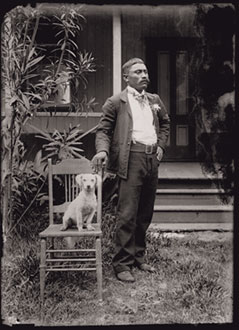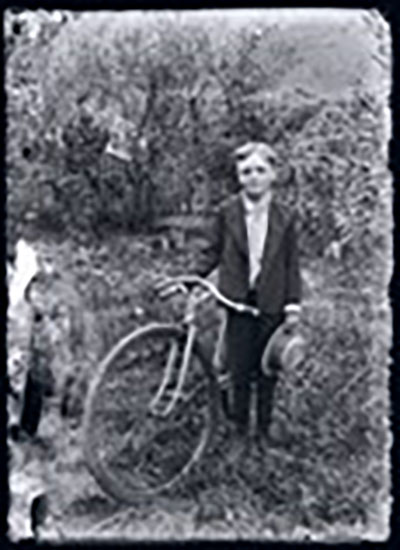Sponsored by: Hawaiʻi Council for the Humanities Damien and Marianne Foundation Ka ʻOhana O Kalaupapa IDEA Center for the Voices of Humanity
Project Cost: $12,000
Completed: 2016
A Preservation and Access Grant awarded by Hawaiʻi Council for the Humanities financed a two-year project to preserve and identify approximately 500 glass plate negatives in the Sacred Hearts provincial archives collection. This was one of only seven projects funded statewide in 2014 by HCH. Additional community partners included the Damien and Marianne Foundation, IDEA Center for the Voices of Humanity, and Ka ʻOhana O Kalaupapa.
These glass plate negatives were produced by Father Joseph Julliotte, SS.CC., while serving as pastor of St. Philomena Church on Molokaʻi, from 1901-1907. He documents people, places, and events during an important period when Kalaupapa was becoming a model for leprosy treatment facilities around the world. His portraits of Kalaupapa residents were executed with great sensitivity and respect. They provide a much needed counterbalance to the clinical photographs of the Public Health Service, which focused on the effects of the disease rather than the dignity of the person. Unfortunately, the identities of many of the individuals photographed were not known.
“The Community of Kalaupapa”
As Reflected in the Photographs of Father Joseph Julliotte

Naihe Pukai (SG 86)

Hattie P. Kalua and Alice Kaelemakule (SG 283)

Willie Wicke (SG 77)

Kalaupapa Family (SG 151)
The provincial archivist worked with Kalaupapa Historian Anwei Law in making visual comparisons between images in the provincial archives and those found in other repositories, including: U.S. Public Health Service, Damien Museum and Archives (Belgium), Sacred Hearts General Archives (Rome), Saint Marianne Cope Shrine and Museum (Syracuse, NY), and U.S. National Archives (Washington D.C.). This resulted in over 80 identifications.
As individuals were identified, their life stories soon emerged. They could now be reconnected to their families and the communities from which they came. The images and personal stories of residents and religious personnel add richness and complexity to the story of the Kalaupapa community. They help redefine the narrative of Kalaupapa beyond the government’s response to leprosy, and dispel preconceived notions about conditions in the settlement at the beginning of the 20th century.


